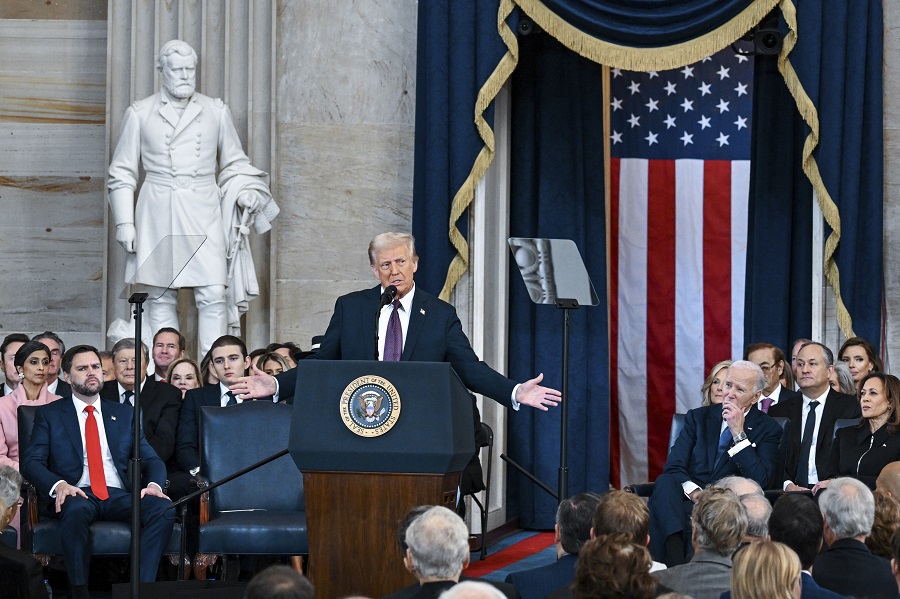How is the US influencing the rest of the world?
It has been said in the past that when the US sneezes the rest of the world catches a cold. The large size of the US economy and its dominance in global financing are two factors that seemingly give the country this global influence.

It certainly seems that the US is at least sniffling at the moment as growth estimates are scaled back and the stock market hits contraction territory. But so far, the rest of the world seems immune. Why is this, and can it continue even if the US’s sniffles turn into a full-blown cold?
As we see it, there are primarily two routes that the US has influence over the rest of the world. The first is due to the economy’s size and the second relates to the dominance of the US dollar in international financing. On the first of these, it is not just that the US accounts for around 15% of global GDP; it is that it is the world’s big hoover of foreign exports with a current account deficit that exceeds USD1tr annually. Other countries/regions that dominate global GDP, like China and the EU have trade surpluses, not deficits. Hence, the rest of the world suffers when demand slows in the US.
In addition, if US policymakers try to actively snub imports by introducing punitive tariffs, as we are seeing right now, then global growth could suffer even if the US does not experience a ‘cold’.
For instance, if we look at revised OECD estimates for growth in 2025 that were released yesterday, we see that the US was downgraded by two tenths from the previous estimate to 2.2%. But Canada’s downward revision was 0.7% points to 1.3%, given that exports to the US account for around 20% of GDP, while Mexico’s was a huge 1.3% points thanks to the fact that its exports to the US account for over a quarter of GDP.
With other countries downgraded as well by the OECD it does seem clear that it, for one, believes that US actions will have a negative bearing globally. It might not be a full-blown ‘cold’ although it has to be said that the OECD still seems quite optimistic about US growth in 2025 at 2.2%. Steven Barrow, Head of Standard Bank G10 Strategy, gave his own forecast for a much more modest 1.5%. But whatever we see from the US economy this year there seems little doubt that there will be a hit to other countries; whether that’s a result of weaker US growth, tariffs, or both.
The market knows this but we are not seeing asset prices in the rest of the world come under the sort of pressure we might have imagined. Even the falls in the Canadian dollar and Mexican peso do not seem large to us given the extent of the possible hit to growth. And when we look at the US dollar in general, or the stock market, it does seem that the US has sneezed and caught the cold, while much of the rest of the world has been relatively unaffected. What are the reasons for this?
Steven Barrow said one is clearly that the US dollar’s weakness does allow other central banks the scope to ease monetary policy further and so circumnavigate the pressures they might feel from weaker US growth and tariffs. Of course, this might change if the US dollar reverses sharply or if the Fed responds to events by hiking rates, but we do not think that either is likely.
Another point Steven Barrow would make is that the world is still a very liquid place. The assets of major central banks like the Fed, ECB, BoJ and PBoC might have come down a bit recently but they are still a combined five times higher than before the global financial crisis. This adds quite a cushion helping to avoid excessive tightening of global financial conditions, as too does the proliferation of central bank swap arrangements, to supply ‘emergency’ dollars since 2008.
A final factor, in Steven Barrow’s opinion, is that a disproportionate part of the global rise in asset prices in recent years, notably in stocks, has come in the US, leaving this market looking overvalued and overseas investors overexposed to the country. Admittedly, these things cannot guarantee that the rest of the world will remain largely cold-free if the US economy slumps, stocks crater and tariffs surge. Nonetheless, we continue to take a glass-half-full view of the resilience that we are likely to see in the rest of the world if the US turns its sniffles into a full-blown cold.








